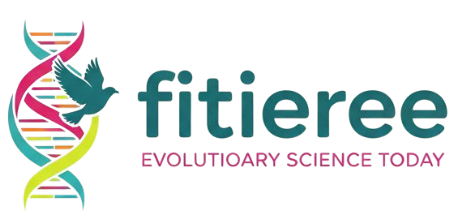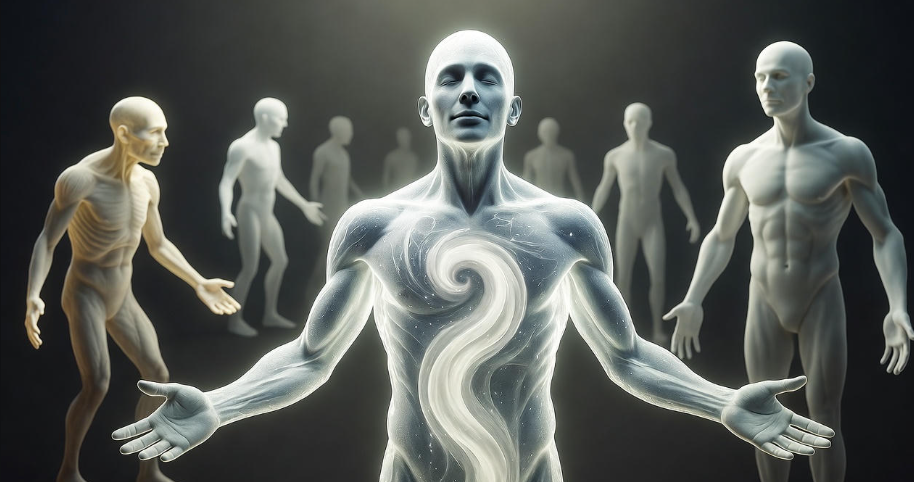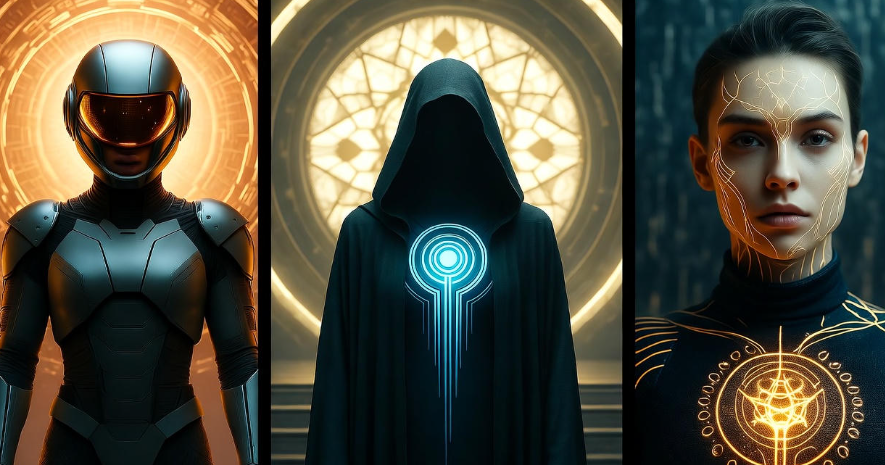It’s amazing when you think about it — inside every one of us lies a complete manual, written in microscopic letters, that explains who we are, how we look, and even how our body works. That manual is called DNA. But DNA isn’t just a biological code; it’s a record of millions of years of evolution, migration, survival, and adaptation. And by reading it carefully, scientists are discovering lessons that modern humans can actually use — lessons about our health, behavior, ancestry, and even our future.
Let’s explore what our DNA really tells us — and how it can make our lives better today.
Understanding the Basics: What DNA Actually Is
DNA stands for Deoxyribonucleic Acid. Think of it as a blueprint or instruction guide that tells every cell in your body how to function. Each cell in your body — from your skin to your brain — carries the same set of DNA.
Inside this DNA are about 3 billion base pairs, forming the code that determines your traits: eye color, height, metabolism, and even your risk for certain diseases.
Here’s a quick and simple breakdown 👇
| Component | Description | Example |
|---|---|---|
| Genes | Segments of DNA that carry instructions for making proteins | A gene for eye color |
| Chromosomes | Structures that organize DNA | Humans have 23 pairs |
| Genome | The complete set of your DNA | All your genetic info combined |
| Mutation | A small change in DNA sequence | Can be harmful, neutral, or beneficial |
So, in short: DNA is the storybook of life. And every one of us carries a slightly different version of that story.
Our DNA is a History Book of Humanity 📜
You might think DNA is all about health and genetics, but it’s actually a time machine. When scientists analyze our DNA, they can trace where our ancestors lived, who they mixed with, and how they survived tough environments.
For instance, did you know that most people outside Africa carry a small percentage of Neanderthal DNA? These ancient cousins interbred with modern humans around 40,000–60,000 years ago. That leftover DNA still affects us today — influencing our immune systems, hair type, and even how we respond to sunlight!
It’s like our DNA is whispering ancient secrets: “Hey, you come from explorers who crossed deserts, mountains, and ice ages.”
So, one big thing modern humans can learn is resilience. Our ancestors faced unimaginable challenges — climate changes, scarcity, predators — and still survived. That strength is coded inside us.
Health Insights Hidden in Our DNA 🧠💪
DNA can be your personal health coach — if you know how to read it.
Through genetic testing, we can identify risks for certain diseases like diabetes, cancer, or heart issues. Some people even use DNA insights to personalize their diet and exercise plans.
For example:
| Health Area | What DNA Can Reveal | How It Helps |
|---|---|---|
| Nutrition | How your body reacts to carbs, fats, caffeine | Helps you choose better foods |
| Fitness | Muscle type, endurance potential | Optimizes your workouts |
| Sleep | Genetic markers for insomnia or sleep cycles | Improves rest quality |
| Disease Risk | Predisposition to illnesses | Enables early prevention |
So, DNA isn’t destiny — but it’s a warning light that helps you make smarter choices. If your genes say you’re more likely to get heart disease, you can start managing your diet early.
And that’s the real magic: by learning from DNA, we can stop waiting for problems and start preventing them.
How DNA Connects All Humans Together 🌍
One of the most beautiful things DNA teaches us is unity. Beneath the differences in skin color, language, or nationality, our genetic makeup is nearly 99.9% identical.
That means all humans — from any country, any background — share almost the same DNA. The differences that seem huge on the outside are only a tiny fraction at the genetic level.
Isn’t that powerful? It reminds us that humanity is one big family — we’ve just taken different paths over time.
DNA and Ancestry: Tracing Where You Truly Come From 🗺️
Modern DNA testing kits can reveal your ancestry in fascinating detail. You can discover that you have roots in multiple continents — maybe 60% South Asian, 25% European, 15% East Asian.
This teaches us that identity is layered, not simple. You might feel connected to one culture, but your DNA can show you’re part of a much wider story.
It also helps break stereotypes. DNA proves that migration and mixing are natural human behaviors. We’ve always traveled, adapted, and blended — that’s how we evolved.
DNA and Mental Health 🧩
Interestingly, DNA also holds clues to how our minds work. Some genetic variants influence how we handle stress, learn languages, or respond to trauma.
While environment plays a big role, understanding these genetic tendencies can help us manage our emotions better. For instance, if your DNA shows a sensitivity to stress, you can train your mind through meditation, mindfulness, or therapy.
So, in a way, DNA helps us understand ourselves more deeply — not just physically, but emotionally too.
The Lesson of Evolution: Adapt or Fall Behind 🐾
Our DNA constantly changes. Every generation passes on tiny mutations, and over time, these create new adaptations. This process — evolution — teaches us a vital modern lesson: those who adapt survive.
Just like our ancestors learned to live in freezing climates or tropical forests, we too must adapt — but in different ways. Today, our challenges aren’t predators or hunger; they’re stress, pollution, and digital overload.
Our DNA reminds us that survival isn’t about strength — it’s about flexibility. Whether it’s adapting to technology, new cultures, or new ways of thinking, that same survival code still runs within us.
DNA in Modern Science and Medicine 🧫
DNA isn’t just about learning our past — it’s shaping our future. Scientists now use DNA to design personalized medicine, cure genetic diseases, and even predict epidemics.
For example:
-
CRISPR technology allows scientists to edit genes, fixing errors in our DNA like a spell-checker.
-
Genomic research helps develop cancer treatments that target specific mutations.
-
Forensic DNA analysis helps solve crimes and identify missing persons.
This shows how learning from our DNA isn’t just fascinating — it’s life-saving.
DNA and Lifestyle: Why One Size Doesn’t Fit All 👟🍎
Ever wonder why a diet works for your friend but not for you? Or why some people can drink three cups of coffee and sleep fine, while others can’t handle one?
It’s your DNA.
Your genes affect how your body metabolizes food, reacts to caffeine, and stores fat. By learning this, we realize that health isn’t about following trends — it’s about understanding yourself.
So, instead of copying what others do, the modern human lesson is: listen to your body’s genetic blueprint.
Ethical Lessons from DNA Discoveries ⚖️
With great knowledge comes great responsibility. As we learn more from DNA, we also face ethical questions.
Who owns your DNA data? How should it be used? Should employers or insurers access it?
These are big questions for our time. And they remind us that while DNA can unlock amazing benefits, we must handle it with care and privacy.
Learning from DNA isn’t just about science — it’s about ethics, respect, and humanity.

Surprising Facts About Human DNA 🤯
| Fact | Explanation |
|---|---|
| You share 50% of your DNA with bananas 🍌 | Shows how connected all life is |
| Humans and chimpanzees share about 98.8% of DNA 🐒 | That’s how close our species are |
| Every human has around 20,000–25,000 genes | And most are still not fully understood |
| DNA can survive for thousands of years | That’s how we study ancient remains |
| 99.9% of all human DNA is the same | We’re more alike than different |
Cool, right? It’s proof that DNA doesn’t just explain science — it connects us to every living thing.
DNA Reminds Us of Balance ⚖️
Our ancestors lived closer to nature. Their DNA adapted to cycles of light, food scarcity, and physical movement. But today, our lifestyle is totally different — artificial light, fast food, and sedentary habits.
By studying DNA, we realize our bodies are still wired for a natural rhythm — sunlight, sleep, and real food. So maybe the best modern lesson from our DNA is this: go back to balance.
The Emotional Lesson: You Are the Result of Survival ❤️
When you think about it, you’re the product of billions of years of successful survival. Every ancestor before you lived long enough to reproduce, pass on their genes, and keep the chain going.
That’s incredible. It means your DNA carries a record of strength, wisdom, and endurance.
So, whenever life feels hard, remember: your DNA is proof that you’re built to survive — because your story didn’t start with you, it started with the very beginning of life itself.
FAQs About DNA and What We Can Learn from It
Q1: Can DNA really tell me who my ancestors were?
Yes! Modern DNA tests can identify your genetic heritage from different regions of the world. It can show your ethnic mix and even connect you to ancient populations.
Q2: Does my DNA decide my future health?
Not entirely. DNA gives you tendencies, not guarantees. Lifestyle, diet, and environment play a huge role in whether those tendencies actually turn into diseases.
Q3: Can DNA change over time?
Yes, small mutations occur naturally in every generation. These changes can sometimes lead to new traits or adaptations.
Q4: Is DNA testing safe and private?
It’s generally safe, but you should always read the privacy policy of any DNA company. Your genetic data is sensitive information.
Q5: Why is DNA important for science?
DNA helps scientists understand diseases, develop cures, track evolution, and even solve crimes. It’s one of the most powerful tools in modern biology.
Final Thoughts 🌱
Our DNA is more than a code — it’s a message from the past, a guide for the present, and a promise for the future. It tells us that humans are connected, resilient, and ever-changing.
By learning from it, we can understand our health, embrace our shared humanity, and adapt to the challenges ahead.
So next time you think about DNA, don’t just imagine a double helix — imagine a story.
A story that began billions of years ago… and continues inside you, right now. 💫




